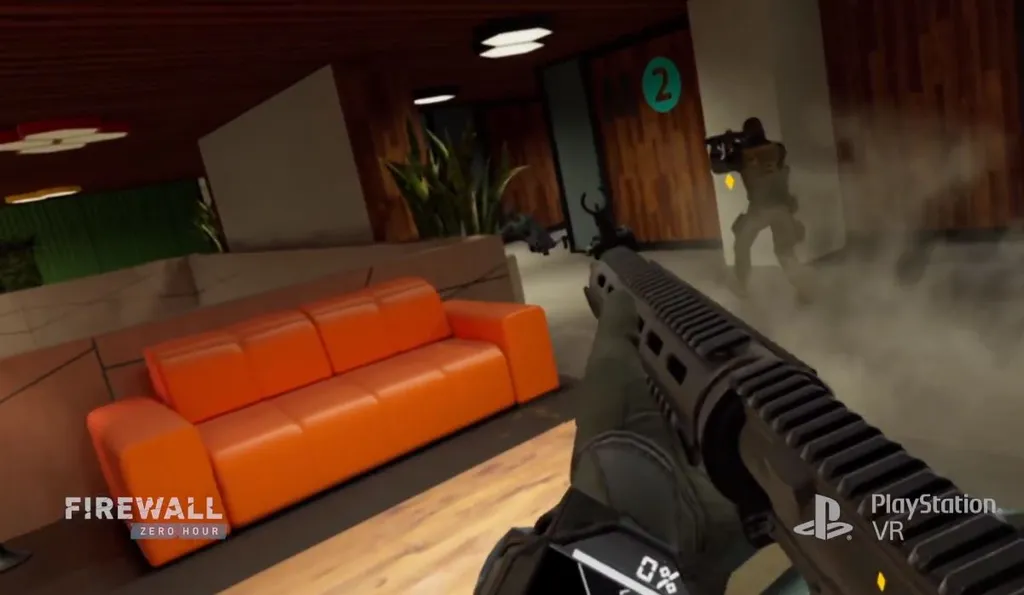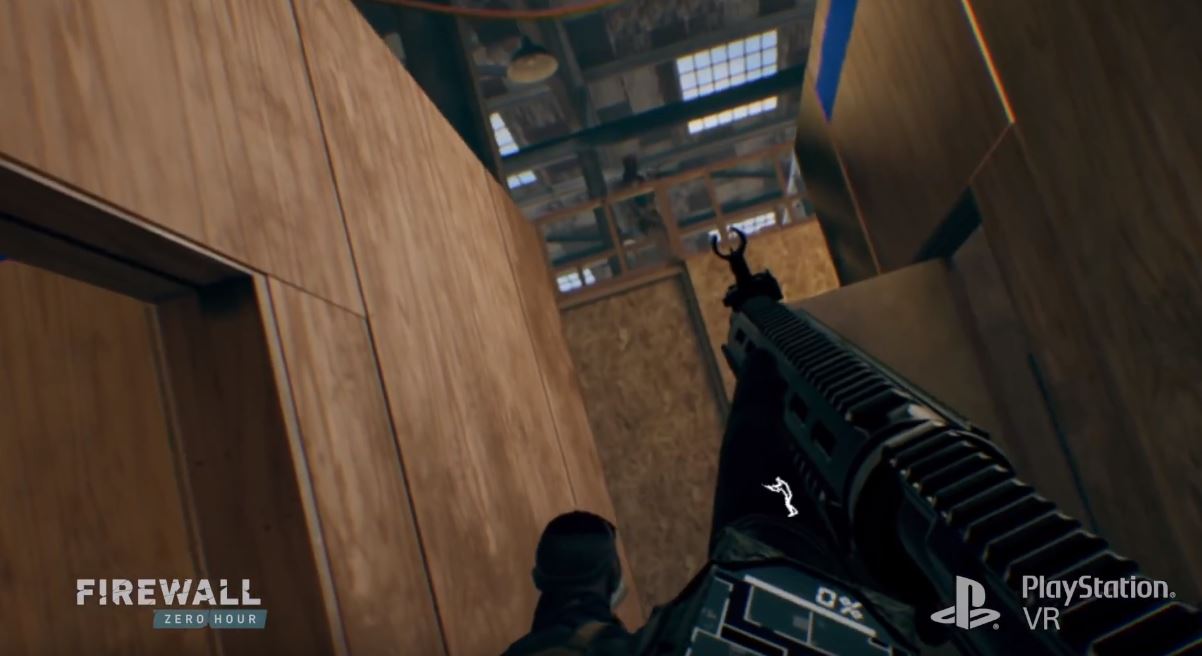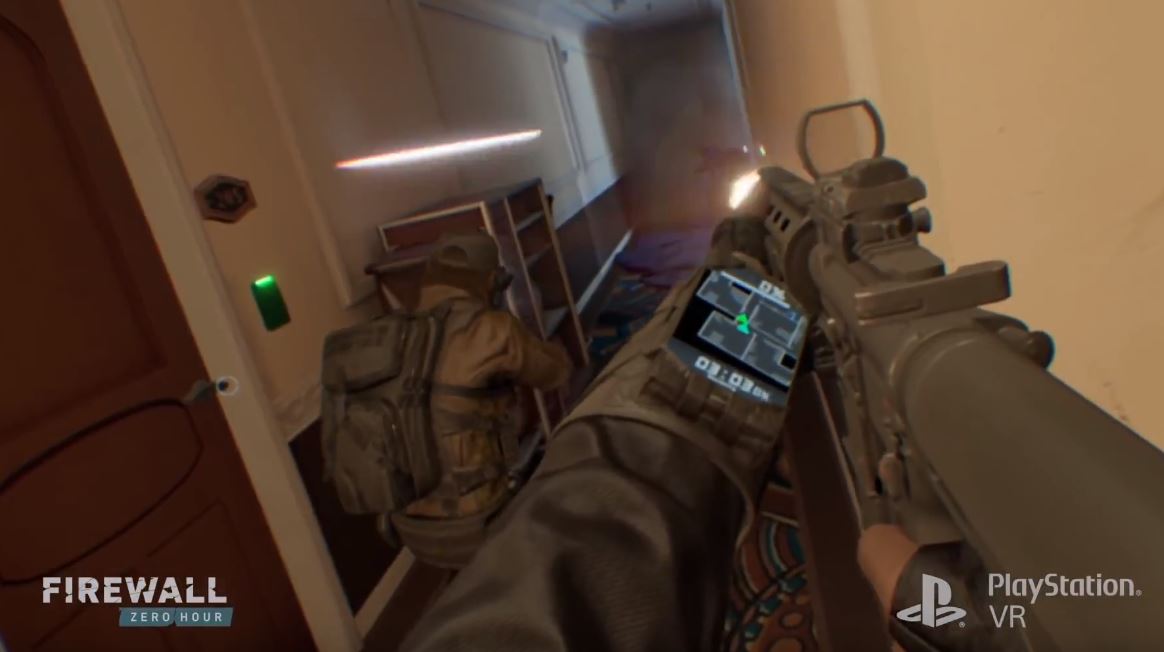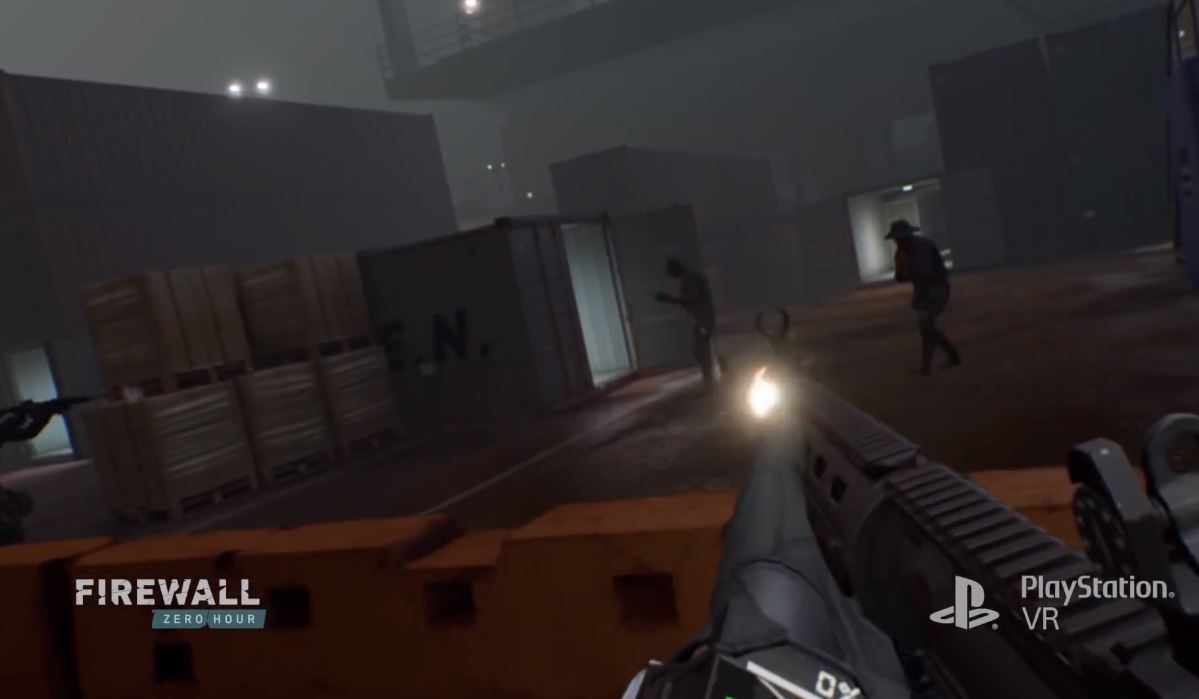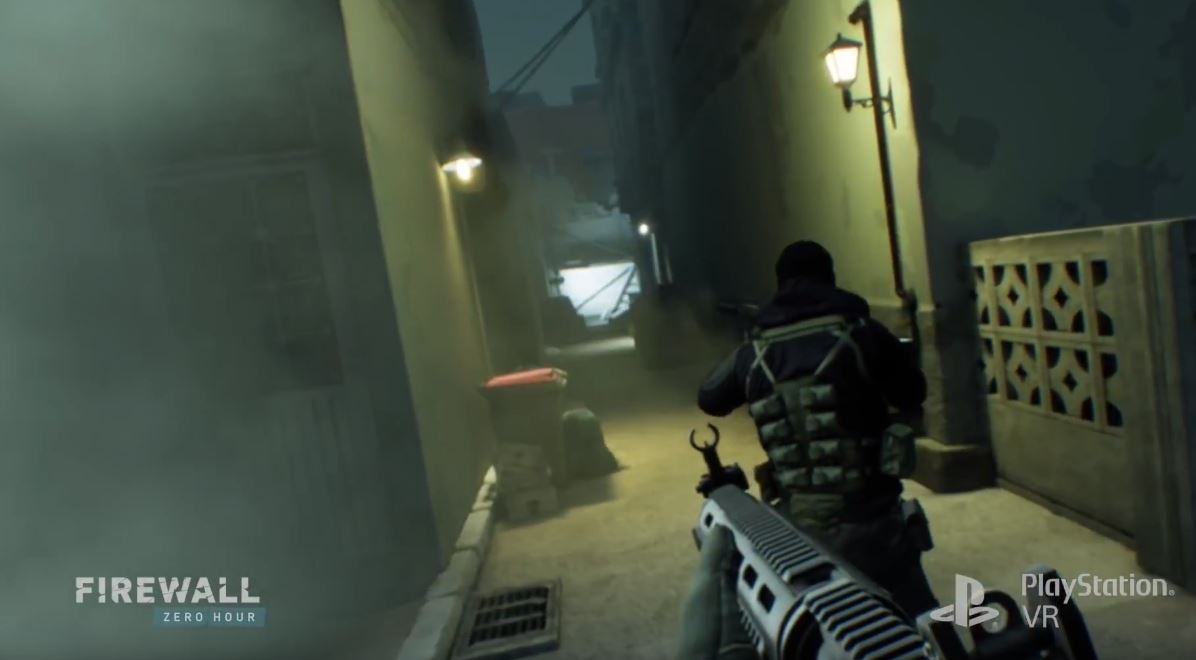Firewall: Zero Hour is less than two weeks away and yesterday Sony hosted a final pre-launch press preview session at their San Mateo headquarters. At the event we were able to go hands-on over the course of four hours with the final release build version of the game across competitive Contracts mode, co-op, and even solo training mode. For the first time ever we also got hands-on time with the game using just a standard DualShock 4.
During our demo every contractor, gun, perk, attachment, camo skin, and everything else was unlocked for tinkering with over a million in-game credits and fully leveled up content to explore — and we spent a lot of time digging into everything.
For those unaware, Firewall: Zero Hour is a first-person tactical, team-based competitive shooter in development by First Contact Entertainment exclusively for Sony’s PSVR. You can read our giant info dump right here if you want more nitty gritty details, but basically imagine Rainbow Six and Onward had a baby and you’re pretty close to understanding how this game works.
Technically there are three ways to play: solo, co-op, or full 4v4 PvP in the Contracts mode. Both Solo and Co-Op are considered “Training” missions and award far less XP and in-game credits. You’ll use the credits to unlock new guns, attachments, cosmetic alterations, and perk slots.
Since Firewall is primarily a multiplayer game that’s heavily focused on 4v4 matches, teamwork is crucial. Luckily every single PSVR has a mic built into it because you’re gonna be encouraged to communicate often while playing this one.
At my preview session there was a good mixture of people like myself that had played the game before (here and here) as well as people that were new to the game or new to VR in general. After a few matches you could hardly tell the difference. We were playing on the final “release” build of the game, which means this is the “gone gold” version that was likely already shipped out to retailers.
The main new things we got to try at this latest preview event were the full selection of maps, character customization, and for the first time ever trying it with a DualShock gamepad instead of just PS Aim.
So, technically, as explained you can play with either the DualShock 4 controller or the PS Aim, but after trying both I can say that I vastly prefer playing with the PS Aim. The DualShock 4 controls are similar to in Farpoint, meaning you need to physically point and aim the light bar on your controller, but it just feels a bit odd waving a gamepad around. I got used to it, but aiming a plastic rifle was way more natural.
There are nine total maps in Firewall: Zero Hour and up until yesterday I’d only seen three of them. All in all there’s honestly a good assortment of options. Some are incredibly small with lots of tight spaces, like Shoot House, which is basically just a plywood shooting range full of small rooms and narrow hallways. Then others are enormous, like Warehouse, which is an enormous waterside shipping location full of cargo containers and multiple levels, or District, which is just a multi-block section of a Middle Eastern city complete with convenience stores and shops to explore and several streets and alleyways.
However, I do think that if I had to pick a favorite map at this point it’d be Office, which is an ultra-modern Silicon Valley-style social networking company’s headquarters. It’s two floors with a large, open foyer in the center, multiple stair wells, several offices, cubicles, and interconnected hallways. Everything is laid out very realistically with desks, plants, and furniture to provide sporadic cover as your explore.
Every map has a unique personality all its own and I can vividly remember exciting moments and tense firefights from every single one over the course of my entire demo.
During this latest hands-on session I was also able to uncover new layers to the gameplay that I hadn’t really realized before. First of all, the strategies for whether you’re playing Attacking or Defending are vastly different. For example, door blockers may be more valuable than grenades if you’re defending and the room with the laptop has a lot of entrances. Additionally, if you’re attacking, you don’t win the match by killing all of the defenders. Unless you hack the firewall and then retrieve intel from the laptop within the time limit, you lose.
At the play session we literally had a scenario where the attacking team wiped out all of the defenders but they’d been so set on hunting us down that they forgot to hack the firewall downstairs so when they found the laptop they couldn’t even access it and the timer ran out. Victory from the grave somehow feels even sweeter.
On top of all that, when you’re dead, you can still monitor security cameras around the level and talk to your teammates in a support role, which is extremely useful as a defender to spot where the attacking team is approaching from.
My only lingering reservation about Contracts is regarding balance. At the event, other than perhaps one time, across the whole four-hour session I don’t think the Attacking team ever won a single match. Now a big part of that is probably due to the fact that none of us knew the maps very well and as a Defender you can lay traps and ambush Attackers more easily. Map knowledge will help counteract that over time, ideally.
Finally, there’s customization. Any time you play a public match in Firewall you earn XP and credits based on performance across your entire account. As you earn XP you level up and with each new level you gain, you’ll unlock new gear, accessories, attachments, and customization options. Then, once something is unlocked, you can “purchase” it with your credits to equip.
There is a bit more complexity to it too. For example, if you unlock a red dot sight and purchase it, then you can equip that red dot sight on any gun that allows it. Attachments are not gun-specific when purchased but can be applied to any applicable weapon. The same goes for camo and skins — all guns have access to a purchased skin and all contractors have access to camo, face paint, arm patches, etc. once purchased.
The last wrinkle to the progression puzzle is that each contractor has a specific perk unique to them, such as carrying more ammo, higher resistance to explosions, or faster reloads. As you increase in level you’ll unlock a contractor’s secondary perk.
There is one single pool of secondary perks that you can purchase from and then assign any of those unlocked secondary perks to any contractor with an open slot, as long as they don’t have the perk already.
Overall Firewall: Zero Hour seems to have really shaped up nicely. There is a lot of map variety, tons of customization and upgrade options, a solid assortment of contractors and guns, and the core gameplay dynamic in Contracts mode is both tactical and thrilling. However, balance issues and concerns over potential player size, the long-term appeal of just one game mode, and the value of limited Co-Op and Solo modes, all have me a little concerned. We’ll have to wait until launch to see how it shakes out!
Check back in a couple of weeks for our full, scored review. Until then, you can read our massive info dump for everything you need to know about Firewall: Zero Hour and let us know what you think down in the comments below!

